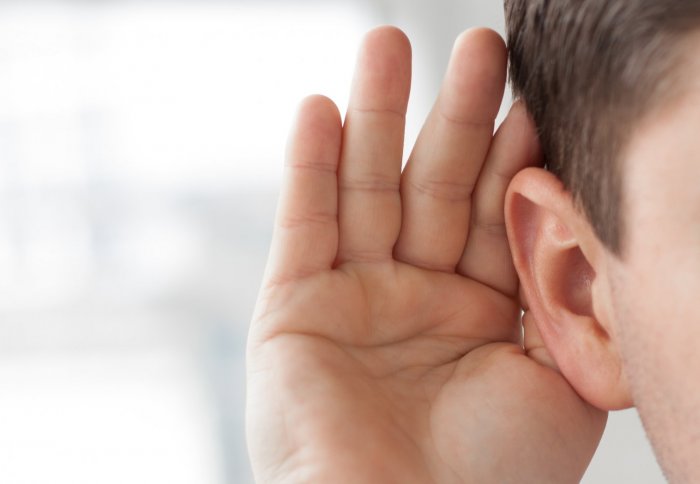Scientists explain in more detail how we hear via bones in the skull
by Colin Smith

Scientists can now more fully explain how we perceive sounds when they travel through our skull.
Humans have two ways of perceiving sound. The first involves the well-known process of sound vibrations travelling through the middle ear to the inner ear, which is where they are transmitted to the brain. The other relies on sound being conducted through bones in the skull, a process known as bone conduction, which has been poorly understood until recently.
Most people may not realise that our skull also transmits sound to our brain.
– Dr Tobias Reichenbach
Department of Bioengineering
Now researchers from Imperial College London and the Max Planck Institute for Brain Research in Germany have developed a model that more clearly explains how bone conduction works. The team says that understanding this process could pave the way for future clinical and industrial applications involving improvements in a range of technologies that use bone conduction to transmit sound.
The research is published in the journal Nature Communications.
Dr Tobias Reichenbach, from the Department of Bioengineering at Imperial College London, says: “The ear is an important organ for helping us to perceive the world around us. Most people may not realise that our skull also transmits sound to our brain. Many companies such as Google are beginning to exploit bone conduction as a way of sending sounds to our brain via wearable interactive technologies such as Google Glass. However, until recently we really haven’t had a clear picture about how bone conduction works. Our study describes the process in more detail, which could help manufacturers find better ways of harnessing bone conduction to deliver higher quality sound.”
In the new study, the team describes how sound, transmitted as vibrations through the skull, travels to the temporal bone, which is situated at the sides and base of the skull. The temporal bone transmits the vibrations to the basilar membrane in the inner ear and tiny bundles of hair, each finely tuned to detect sounds at different frequencies, transmit the vibrations to the brain for decoding.
Dr Reichenbach adds: “Many of us cringe when we play back a recording of our own voice. This is because we perceive our voice differently to how others hear it. Interestingly, bone conduction plays a role in how we recognise our voice. This is because the process is more effective at transmitting lower frequency sounds to the brain, which means that we perceive our voice as being deeper than what it is.”
A potential clinical application for the team’s research is the development of better tests to determine hearing impairments in newborn babies and children. Currently, doctors carry out a simple, non-invasive examination using a microphone that they insert in the ear canal to record sounds called otoacoustic emissions. These sounds are generated by the inner ear and they are a sign of healthy hearing. However, it has been unclear how these sounds are generated. The new research shows that otoacoustic emissions can involve bone conduction, which could enable doctors to fine-tune their method and improve the way they detect hearing defects.
An industrial application for the research could involve finding better ways to harness bone conduction to deliver sounds via new technologies. Headphones, hearing aids and internet-based interactive technologies such as Google Glass are being developed by engineers to deliver sound via bone conduction. Such technologies could potentially deliver higher quality sounds without blocking the ear passage. However, one of the current challenges for engineers is delivering sounds at higher frequencies. Understanding the underlying principles of bone conduction could lead to improvements in the way that technologies transmit sound through bone.
The team is currently seeking to develop new partnerships with manufacturers.
Article text (excluding photos or graphics) © Imperial College London.
Photos and graphics subject to third party copyright used with permission or © Imperial College London.
Reporter
Colin Smith
Communications and Public Affairs